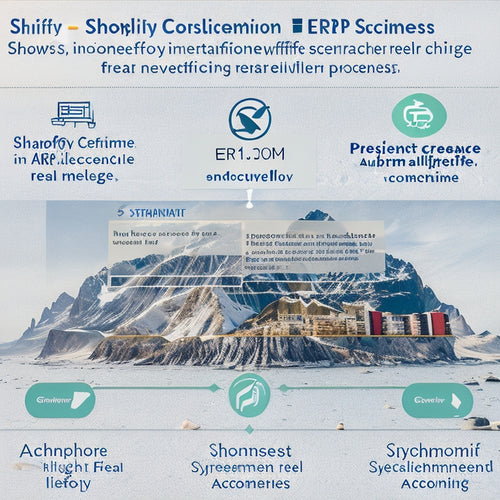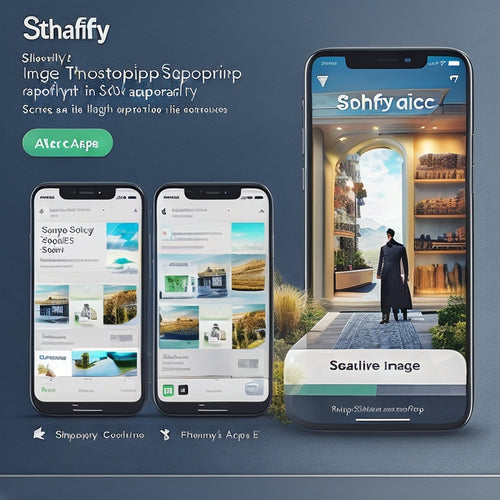Create a Video Ad Campaign
Share
In today's digital age, the power of video advertising cannot be underestimated. As consumers increasingly turn to online platforms for their shopping needs, advertisers must find innovative ways to capture their attention and drive conversions.
Enter shoppable videos - a cutting-edge approach that seamlessly integrates products into video content, allowing viewers to make purchases directly within the video itself.
This article explores the immense potential of shoppable videos in advertising, highlighting strategies for targeting the right audience, maximizing impact through strategic placement, and measuring success for optimal campaign optimization.
Join us as we delve into this exciting new frontier of digital marketing.
- Choosing the right platforms and channels is crucial, with options like Instagram, YouTube, TikTok, and Snapchat offering different advantages and target audiences.
- Exploring alternative advertising channels such as TikTok and Snapchat can help maximize reach and impact, especially among engaged millennials and Gen Z users.
- Leveraging social media and influencer marketing can enhance brand visibility, credibility, and trust by connecting with target audiences and tapping into influencers' engaged followers.
- Optimizing video length, format, and content relevance for different platforms, as well as strategically placing clear calls-to-action, can improve engagement and conversions.
The Power of Shoppable Videos in Advertising
Shoppable videos in advertising have the potential to significantly enhance consumer engagement and sales conversion rates. The integration of shoppable video strategies allows viewers to seamlessly transition from passive spectators to active participants in the shopping experience. By providing an interactive platform, brands can effectively capture the attention of their target audience and guide them towards making purchase decisions.
One of the key advantages of shoppable videos is their ability to convert viewers into customers. Traditional advertisements are often limited by their static nature, but shoppable videos empower consumers by allowing them to directly engage with products featured in the video. This not only enhances user experience but also creates a sense of ownership and connection with the brand.
Furthermore, shoppable videos enable viewers to explore additional information about products within the video itself, eliminating the need for external research. By incorporating clickable links or overlays, brands can provide detailed product descriptions, pricing information, and even customer reviews at just a click away. This seamless integration between content and commerce streamlines the purchasing process and reduces barriers that could potentially deter consumers from completing transactions.
Data-driven insights also play a crucial role in optimizing shoppable video campaigns. Brands can use analytics tools to track viewer behavior and preferences, enabling them to personalize content according to individual interests. By leveraging this data, marketers can tailor future campaigns more effectively, ensuring that their messaging resonates with target audiences on a deeper level.
In summary, shoppable videos offer an innovative approach for brands looking to enhance consumer engagement and boost sales conversion rates. By implementing interactive features and leveraging data-driven insights, brands can create immersive shopping experiences that foster a sense of belonging while guiding viewers towards becoming loyal customers.
Integrating Products into Video Content
Integrating products seamlessly into video content allows for a more engaging and immersive experience for viewers. Video marketing has become an essential tool for brands to connect with their target audience, and the integration of products within these videos enhances the effectiveness of advertising campaigns.
To create a compelling video ad campaign, integrating products strategically can captivate viewers and increase brand visibility. By seamlessly blending products into video content, brands can showcase their offerings in a way that feels natural and non-intrusive. This approach not only grabs the attention of viewers but also creates a sense of belonging as they witness how the product fits effortlessly into their desired lifestyle.
When integrating products into video content, marketers should consider the following:
- Contextual relevance: Placing products in scenes that align with their purpose and usage helps viewers visualize how they can incorporate them into their lives.
- Product demonstration: Showcasing the features and benefits of the product through real-life scenarios provides a tangible understanding of its value.
- Emotional appeal: Creating stories or narratives around the product triggers emotional connections, making it easier for viewers to relate to and desire ownership.
- Call-to-action: Including clear prompts at strategic points in the video encourages viewers to take immediate action, such as visiting a website or making a purchase.
Incorporating these elements into shoppable videos ensures that brands maximize engagement levels while fostering a sense of community among their target audience.
Targeting the Right Audience
Understanding your target market is crucial in creating an effective video ad campaign. By analyzing demographic and psychographic data, you can gain insights into the preferences, behaviors, and needs of your audience.
Utilizing data and analytics enables you to identify the most relevant platforms and channels to reach your target market, optimizing your marketing strategy for maximum impact.
Additionally, tailoring your message to specific segments allows for personalized communication that resonates with different customer groups, increasing engagement and conversion rates.
Understanding Your Target Market
To effectively create a video ad campaign with shoppable videos, it is imperative to gain a comprehensive understanding of your target market. Understanding consumer behavior and identifying market trends are crucial aspects of this process.
By delving into the mindset, preferences, and motivations of your target audience, you can tailor your video content to resonate with them on a deeper level. This understanding allows you to craft compelling narratives that align with their values and aspirations.
Additionally, by analyzing market trends, such as emerging technologies or popular cultural phenomena, you can stay ahead of the curve and create videos that feel current and relevant.
By combining these insights with data-driven strategies, you can maximize the effectiveness of your shoppable video ad campaign and connect with your audience in a meaningful way.
Utilizing Data and Analytics for Effective Targeting
Utilizing data and analytics can enable precise targeting in video advertising, ensuring that the right audience receives content tailored to their preferences and behaviors. Effective targeting is crucial for a successful shoppable video ad campaign as it maximizes the chances of reaching potential customers who are more likely to engage with the content and make a purchase.
By analyzing data such as demographics, interests, browsing behavior, and previous interactions, marketers can gain valuable insights into their target market's preferences and needs. This data-driven approach allows advertisers to create personalized experiences that resonate with viewers on a deeper level, increasing the likelihood of conversion.
Furthermore, continuous monitoring and analysis of data analytics throughout the campaign provide valuable feedback for optimization purposes.
Overall, leveraging data and analytics enables advertisers to deliver highly targeted content that connects with the right audience at the right time, driving better results in shoppable video ad campaigns.
Tailoring Your Message to Specific Segments
Tailoring the message to specific segments allows marketers to deliver content that aligns with the unique preferences and needs of different target audiences, increasing the effectiveness of their advertising efforts. By tailoring messaging and creating personalized content, marketers can create a stronger connection with consumers, leading to higher engagement and conversion rates.
This approach acknowledges the diverse interests and desires of individuals within a target audience, allowing marketers to speak directly to their needs. Utilizing data and analytics, marketers can gain insights into consumer behavior and preferences, enabling them to craft messages that resonate on a personal level.
Personalization not only enhances the relevance of advertising but also fosters a sense of belonging among consumers. When individuals feel understood and catered to by brands, they are more likely to develop loyalty and trust in those brands.
Maximizing Impact with Strategic Placement
This discussion on maximizing impact with strategic placement focuses on three key points.
First, choosing the right platforms and channels is crucial for reaching the target audience effectively. By understanding where the target audience spends their time online, businesses can ensure their video ads are seen by the right people at the right time.
Second, leveraging social media and influencer marketing can greatly amplify the reach and impact of video ads. Partnering with influential individuals or utilizing popular social media platforms allows businesses to tap into existing communities and increase brand visibility.
Finally, optimizing video length and format for different platforms is essential for capturing and retaining viewer attention. Different platforms have varying requirements and user behaviors, so tailoring videos accordingly ensures maximum engagement and effectiveness.
Choosing the Right Platforms and Channels
When selecting platforms and channels for a video ad campaign, it is important to consider the target audience, their demographics, and the type of content they engage with. This decision can greatly impact the success of the campaign and ensure that it reaches the right people at the right time. Here are key factors to consider:
- Choosing the right platforms and channels:
-
Instagram vs. YouTube - Instagram is known for its visually appealing content and has a large user base, making it ideal for reaching younger audiences who enjoy browsing through images and short videos. YouTube, on the other hand, offers longer-form videos and appeals to a wider demographic range.
-
Exploring alternative advertising channels:
-
TikTok - With its rapidly growing user base, especially among Gen Z users, TikTok provides an opportunity to reach a highly engaged audience through short-form videos that often go viral.
-
Exploring alternative advertising channels:
- Snapchat - Known for its ephemeral nature and popularity among younger users, Snapchat can be effective for targeting millennials and Gen Z with engaging video ads that disappear after being viewed.
Considering these platform options will help maximize the reach and impact of a shoppable video ad campaign by ensuring it is delivered to the right audience in a format they prefer.
Leveraging Social Media and Influencer Marketing
When it comes to choosing the right platforms and channels for your video ad campaign, it is crucial to consider leveraging social media and influencer marketing.
Social media platforms have become a powerful tool for businesses to connect with their target audience and increase brand visibility. By collaborating with influencers who have a strong following in your niche, you can tap into their engaged audience and drive traffic to your shoppable videos. Influencer collaborations not only help you reach a wider audience but also build credibility and trust among consumers.
Additionally, social media engagement plays a vital role in the success of your campaign. Encouraging viewers to like, comment, and share your videos enhances visibility and increases the chances of conversions.
Therefore, incorporating social media and influencer marketing strategies can significantly amplify the impact of your video ad campaign while fostering a sense of belonging among your target audience.
Optimizing Video Length and Format for Different Platforms
Optimizing the length and format of videos for various platforms is crucial in ensuring effective distribution and engagement. To maximize video engagement, it is important to consider the specific characteristics and preferences of each platform. Here are some key factors to consider when optimizing video length and format:
-
Platform specifications: Different platforms have different requirements for video length, aspect ratio, and resolution. Adhering to these specifications ensures that your videos are displayed properly on each platform.
-
Audience behavior: Understanding how users interact with videos on different platforms can help you tailor your content accordingly. For example, shorter videos may be more effective on social media platforms where users have shorter attention spans.
-
Content relevance: Adapting the content of your videos to fit the context of each platform can enhance viewer engagement. This could involve incorporating relevant hashtags or using a storytelling approach that resonates with the platform's audience.
-
Call-to-action placement: Placing clear calls-to-action at strategic points within your video can drive user engagement and encourage viewers to take action.
By optimizing video length and format for different platforms, businesses can effectively distribute their content while maximizing viewer engagement.
Measuring Success and Optimizing Campaigns
To gauge the effectiveness and efficiency of a video ad campaign, it is crucial to measure key performance indicators (KPIs) such as click-through rates, conversion rates, and average order values. Measuring campaign effectiveness allows marketers to understand how well their videos are resonating with the target audience and whether they are achieving their desired objectives.
One effective method for measuring campaign effectiveness is through A/B testing. This involves creating multiple versions of the video ad and showing them to different segments of the target audience. By comparing the performance of each version, marketers can identify which elements resonate most with viewers and optimize future campaigns accordingly.
Click-through rates (CTRs) provide insight into how many viewers were compelled to take action after watching a video ad. A high CTR indicates that the video was engaging and persuasive enough to drive viewers to click on a call-to-action link or visit a website.
Conversion rates measure the percentage of viewers who not only clicked on the call-to-action but also completed a desired action, such as making a purchase or signing up for a newsletter. This metric demonstrates how effective the video ad is at generating actual conversions.
Average order value is another important KPI that measures the average amount spent by customers who made a purchase after viewing the video ad. This metric helps determine whether the campaign is attracting high-value customers who contribute significantly to overall revenue.
By analyzing these KPIs and conducting ongoing A/B testing, marketers can continuously optimize their shoppable video campaigns for maximum impact and return on investment.
Frequently Asked Questions
How can shoppable videos benefit small businesses in particular?
Shoppable videos offer numerous benefits for small businesses. They have the potential to increase sales by providing a seamless shopping experience, engaging customers with interactive content, and enabling direct purchasing within the video itself.
What are some creative ways to integrate products into video content?
Product placement and interactive storytelling are effective ways to integrate products into video content. By strategically placing products in a narrative, brands can create a seamless and engaging experience for viewers, increasing the likelihood of purchasing and fostering a sense of belonging.
How can advertisers ensure that their shoppable video ads are reaching the right audience?
To ensure that shoppable video ads reach the right audience, advertisers can employ targeted strategies such as audience segmentation. By dividing the target market into distinct groups based on demographics, behaviors, and preferences, advertisers can tailor their campaigns to resonate with specific segments and drive higher engagement and conversions. This data-driven approach allows for more personalized and relevant ad experiences, increasing the likelihood of reaching the intended audience effectively.
Are there any specific platforms or channels that are more effective for shoppable video ad placement?
Social media platforms like Facebook, Instagram, and YouTube are effective for shoppable video ad placement due to their large user base and advanced targeting options. Additionally, E-commerce websites provide a direct channel for reaching users who are already engaged in online shopping activities.
What are some key metrics and strategies for measuring the success of a shoppable video ad campaign?
Key strategies for measuring the success of a shoppable video ad campaign include tracking metrics such as click-through rates, conversion rates, and sales generated. These data-driven measurements provide valuable insights into the effectiveness of the campaign and guide future marketing decisions.
Related Posts
-

Why Business Owners Need Online Learning Platforms
You need an online learning platform to stay ahead of the curve in today's fast-paced business environment, where ada...
-

Streamlining Your Business: The Power of Shopify ERP Integration
The integration of Shopify with ERP software offers a powerful solution for businesses, automating various processes...
-

Essential SEO Apps for Shopify: Boost Your Store's Visibility
This article explores the significance of SEO apps for Shopify stores in enhancing visibility and ranking in search ...


